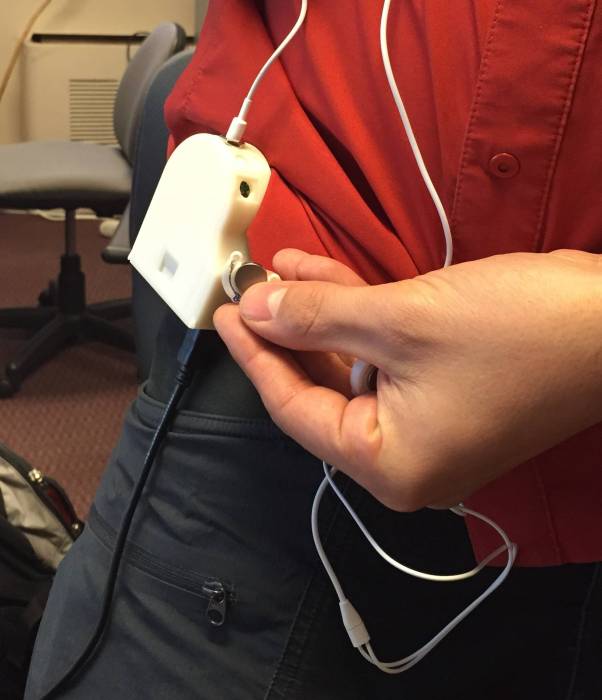
Description:
In our we presented a prototype system for communicating information about a real-time music system to human performers using the haptic modality. The system was integrated into a software framework for live electronics CIRMMT Live Electronics Framework, allowing users to design tactile notifications about any parameter state or change in the system. We informally evaluated the effectiveness of the prototype in collaboration with a percussion performer who helped us designing different tactile cues. In continuation of this work we investigated physical and perceptual characteristics of our tactile display. Nevertheless, this research has so far been carried out in a single-user context and for specific musical situations only.
In this project, we intend to leverage our previous results and apply them in a real-world context for music creation and ensemble performance. We will collaborate with the performers of the Quasar saxophone quartet (http://www.quasar4.com/), for the creation of a piece by composer Fredrik Gran to be performed in a public concert. Composition, performance and research aspects will be considered in a holistic approach from the very beginning in order to take full advantage of the possibilities given by our haptic notification system.
The compositional interest is to explore structural and rhythmic relationships of a complexity difficult or impossible to achieve without a multi-user synchronization system (Chafe, Caceres, and Gurevich, 2010). Using our haptic notification system in CLEF it is possible to transmit tactile notifications – such as temporal cues – from system to performers and in response to performer actions – without the need of obtrusive auditory or visual displays.
We will work on the design of a tactile displays embedded with vibrating actuators, whose vibrating behavior we previously investigated (Frid, Giordano, Schumacher et al., 2013), to assure coherent experience for each performer. Subsequently, we will proposes a vocabulary of “haptic notification cues” (Giordano and Wanderley, 2013), enabling users to design custom notifications. Ultimately, we will evaluate the effectiveness of our haptic cues in an iterative performer-informed evaluation process. Users will test the system in terms of robustness and flexibility, and will be actively engaged in providing us with feedback to improve the current version of the system.
IDMIL Participants:
External Participants:
Fredrik Gran
